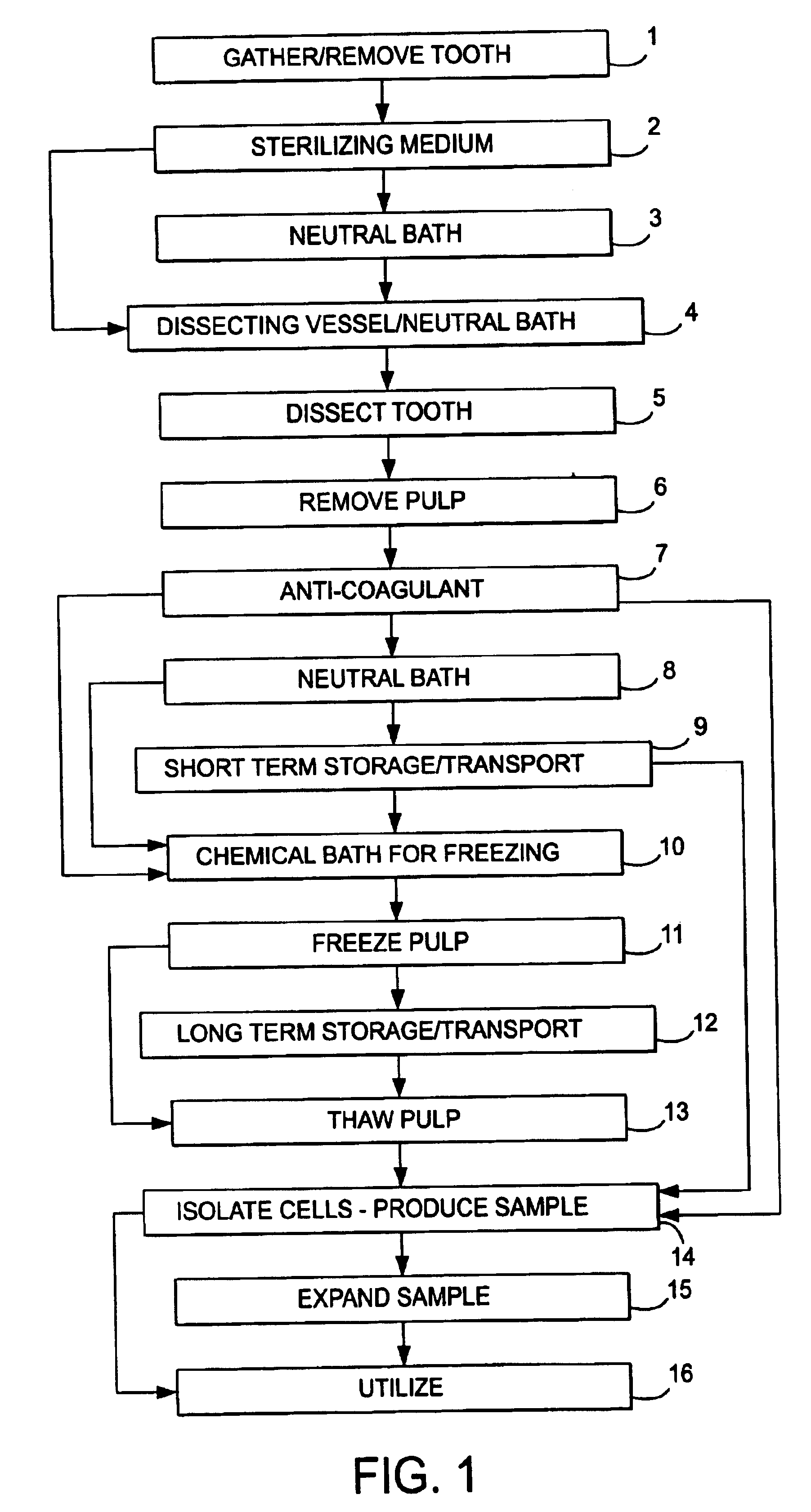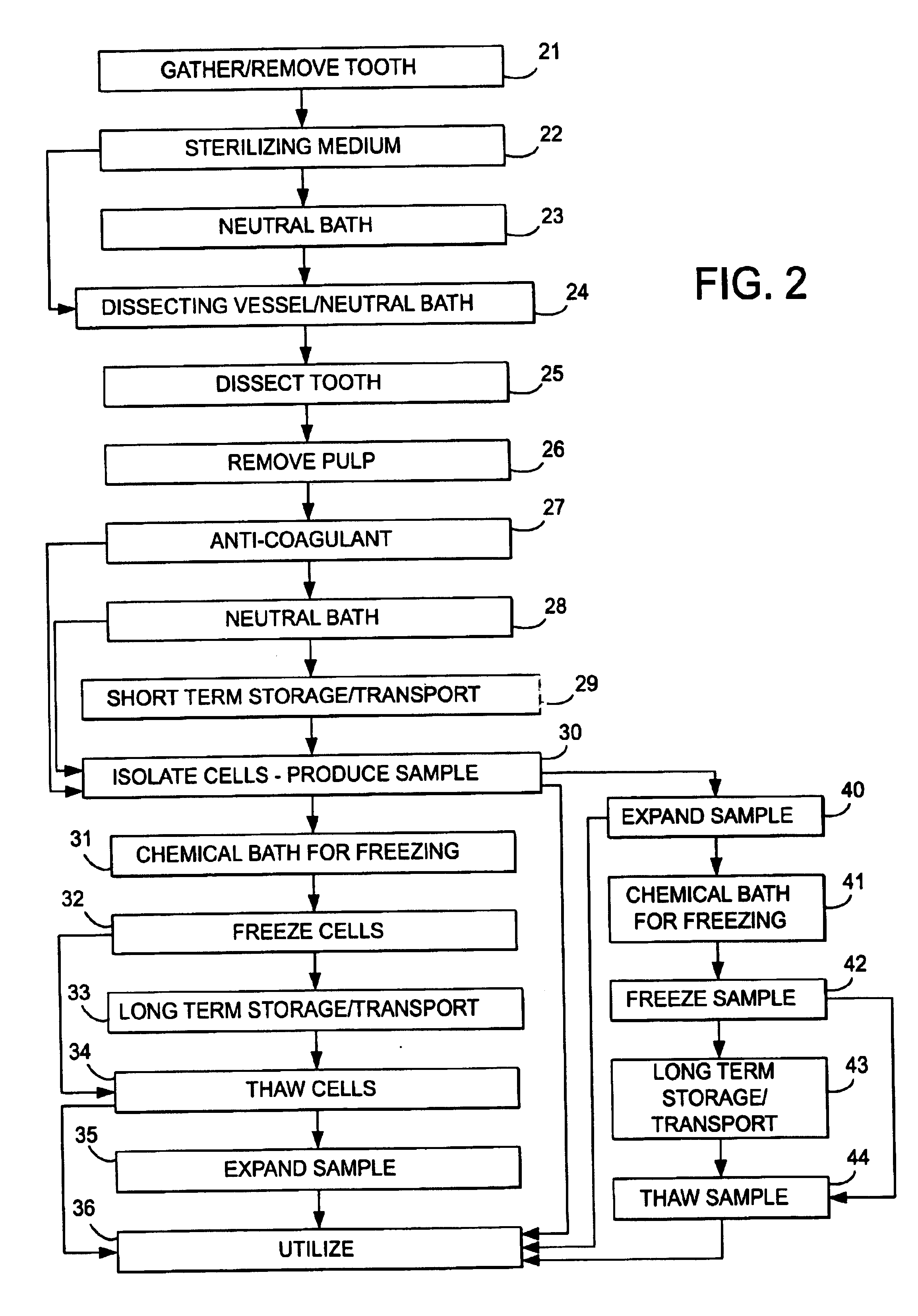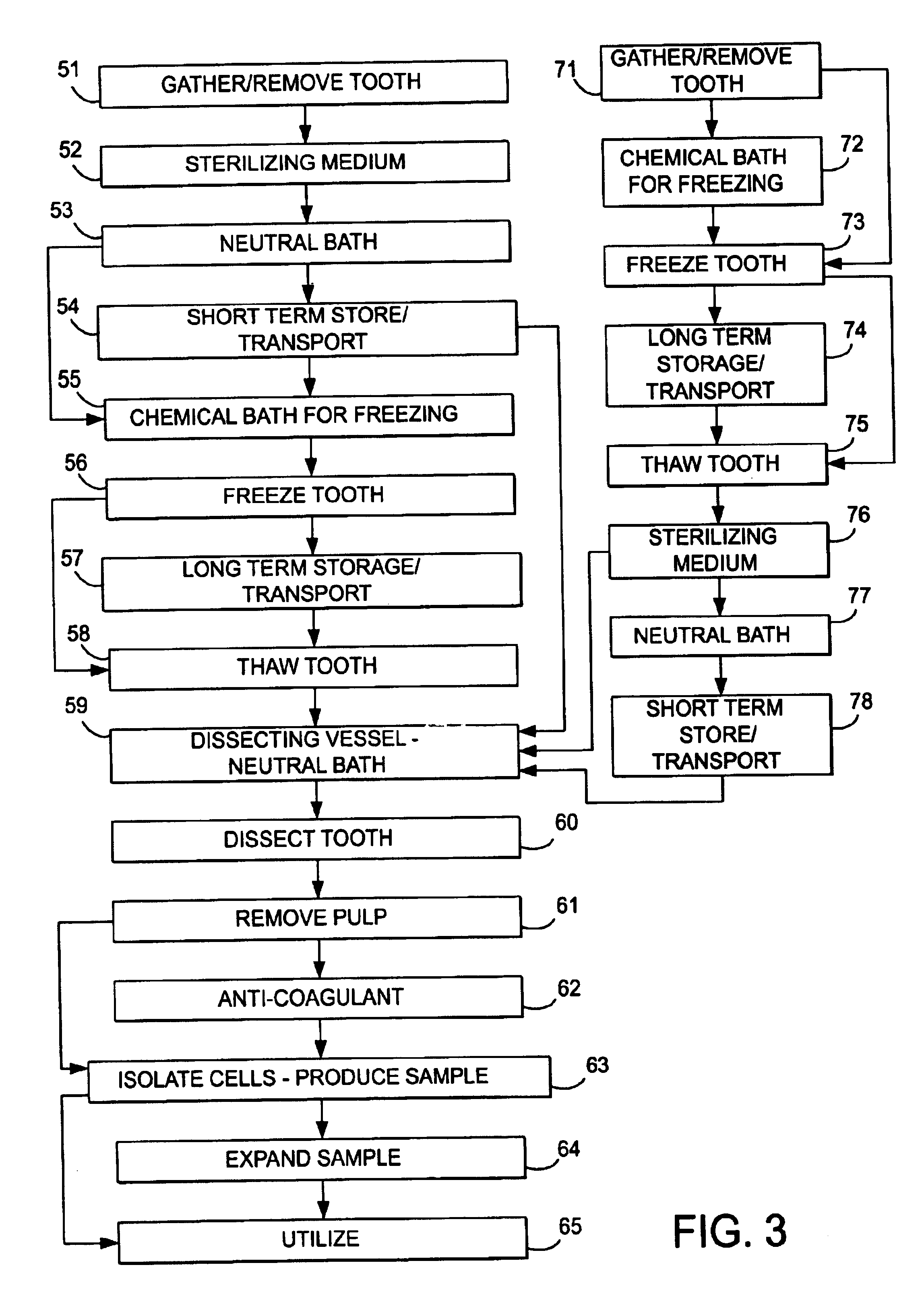Stem cell and dental pulp harvesting method and apparatus
a stem cell and dental pulp technology, applied in the field of stem cell and dental pulp harvesting methods and apparatuses, can solve the problems of patient fatigue, pain in extraction process, and description or suggestion of a method or apparatus designed to utilize as cells, and other problems, to achieve the effect of reducing the risk of infection, and improving the quality of li
- Summary
- Abstract
- Description
- Claims
- Application Information
AI Technical Summary
Benefits of technology
Problems solved by technology
Method used
Image
Examples
Embodiment Construction
Referring initially to FIG. 1, the steps in the method of the present invention are shown in flow-chart form. FIG. 1 shows such steps in circumstances where it is most desirable to freeze the pulp extracted from a tooth, rather than the tooth itself or the isolated cells obtained from the tooth. Such circumstances may exist where the medium for sterilization and means for dissection of the tooth are each close or at hand, but the facility for isolation of cells from the pulp is distant. Thus, it may be possible to supply a dentist with a kit for sterilization utilizing the apparatus of the present invention, but the isolation of cells from the pulp obtained and treated by the dentist is best done at a hospital or "cell bank."
In FIG. 1, a tooth identified for removal is extracted by a dentist 1, or gathered after it is naturally shed 1. After securing the tooth 1, the dentist or parent or other responsible person places the tooth into a sterilizing medium 2. It should be noted here t...
PUM
| Property | Measurement | Unit |
|---|---|---|
| time | aaaaa | aaaaa |
| plasticity | aaaaa | aaaaa |
| time | aaaaa | aaaaa |
Abstract
Description
Claims
Application Information
 Login to View More
Login to View More - R&D
- Intellectual Property
- Life Sciences
- Materials
- Tech Scout
- Unparalleled Data Quality
- Higher Quality Content
- 60% Fewer Hallucinations
Browse by: Latest US Patents, China's latest patents, Technical Efficacy Thesaurus, Application Domain, Technology Topic, Popular Technical Reports.
© 2025 PatSnap. All rights reserved.Legal|Privacy policy|Modern Slavery Act Transparency Statement|Sitemap|About US| Contact US: help@patsnap.com



